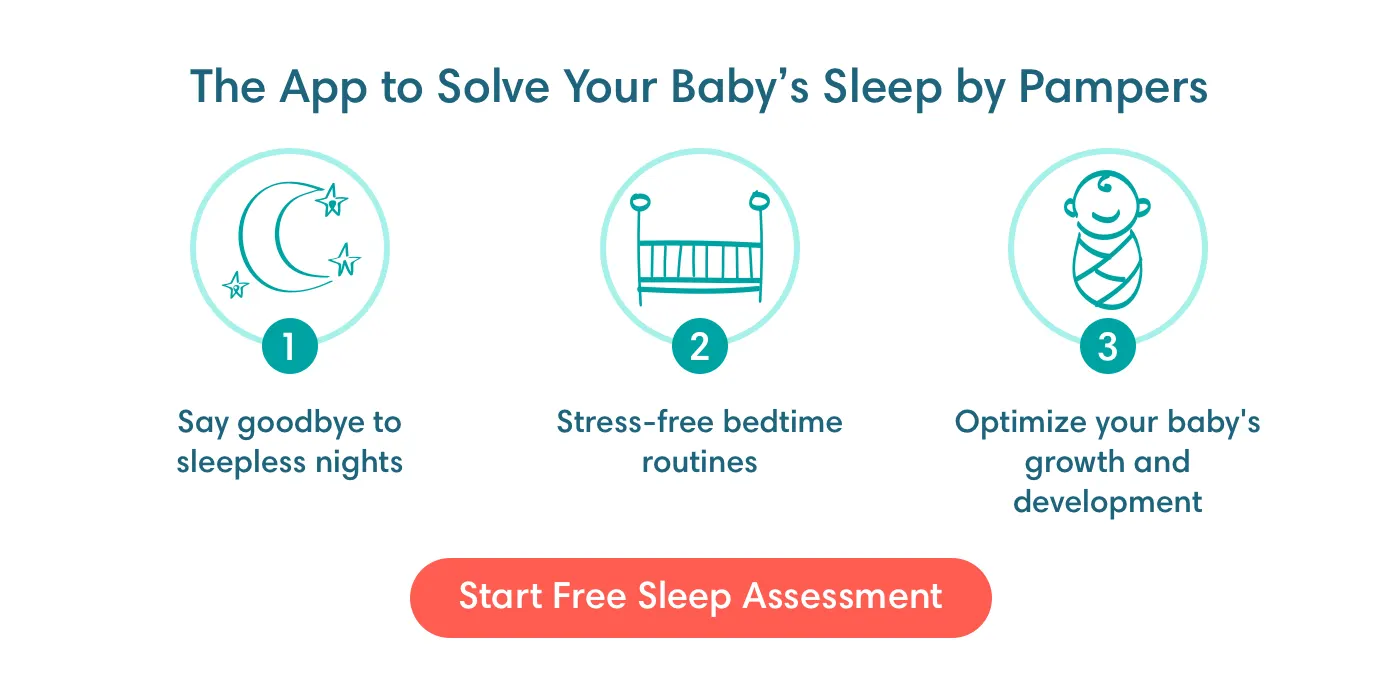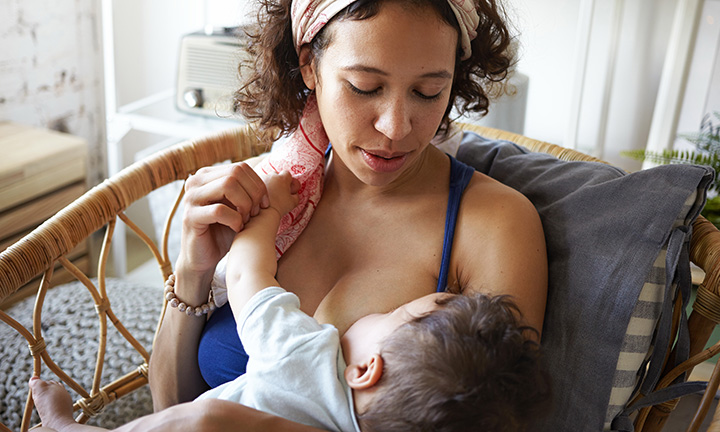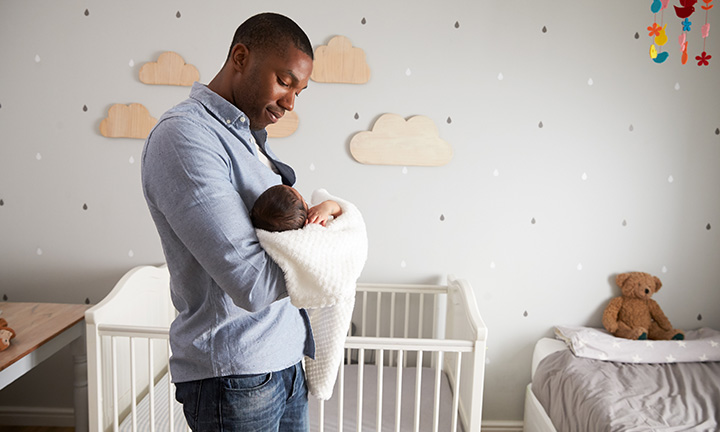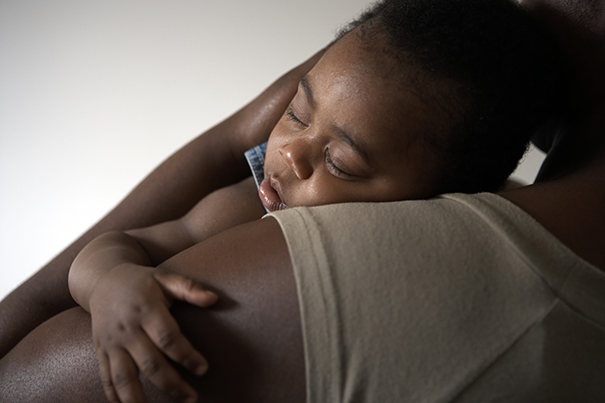
When Can Babies Sleep on Their Stomach?
For a young baby, sleeping on the stomach is considered unsafe due to the risk of SIDS – the safest position for your baby to sleep in during the first year is on his or her back. Read on to learn when it’s OK to let your baby sleep on his or her stomach and how to ensure the safest possible sleep environment for your baby.
Is It OK for Your Baby to Sleep on His or Her Tummy?
Sleeping on the stomach is not considered a safe sleeping position for your baby in the first year. Instead, put your baby to sleep on his or her back for every sleep, including daytime naps.
The same goes for placing your baby to sleep on his or her side. From the side-sleeping position, your little one could easily roll onto his or her stomach.
If your baby rolls over during sleep, gently return him or her to the back-sleeping position. Continue to do this until your infant can roll over easily in both directions – back to stomach and stomach to back – unaided. Stomach sleeping is known to carry a higher risk of sudden infant death syndrome (SIDS) for young babies. Putting your baby to sleep in the back-sleeping position – along with other important precautions, such as keeping your baby’s cot free of loose bedding, toys and other items – helps reduce the risk of SIDS. It’s because of preventive measures like this – which are known to be effective – that SIDS is thankfully very rare these days.
What if Your Baby Rolls onto His or Her Stomach While Sleeping?
Even babies who haven’t learned to roll over by themselves yet may sometimes turn onto their side or stomach while asleep. If you notice your baby has rolled onto the stomach or side while sleeping, gently return your infant to the safer, back-sleeping position. When your baby is older and capable of rolling over both ways (back to stomach and stomach to back) comfortably without any help, there’s no need to turn your child back. However, when you put your baby down to sleep or for a daytime nap, continue to place your baby on his or back in the cot.
At What Age Can Babies Sleep on Their Stomach?
It isn’t safe to put babies to sleep on their stomach at least until the age of 1 year old, because this position increases the risk of SIDS. If you notice your baby has rolled onto his or her stomach while asleep, just gently return him or her to the back-sleeping position. However, when your baby gets older and finds it easy to roll in both directions (back to stomach and stomach to back) unaided, then there’s no need to reposition your little one. All children develop at their own pace, but babies often reach this milestone sometime between around 7 and 9 months old. Even then, experts advise that you continue to put your baby down to sleep in the cot on his or her back. Make sure the cot has a firm mattress that fits the cot perfectly and is covered with a tight-fitting sheet. The cot shouldn’t contain any loose bedding, bumper pads, duvets, pillows, sleeping wedges or stuffed animals. It should be completely empty.
Tummy Time
It’s OK for your baby to spend time on his or her stomach while awake and alert during the day. This kind of daytime exercise, known as tummy time, is highly recommended for all babies. Getting plenty of tummy time helps your baby build the muscle strength and coordination needed to sit up and crawl. Be sure tummy time sessions are supervised at all times by you or another adult.
What if Your Baby Prefers Sleeping on His or Her Stomach?
Some babies may prefer to sleep on their stomach or side. Even so, you should always place your baby in the cot on his or her back. If your baby shifts to a side-sleeping or stomach-sleeping position while asleep, return your infant to his or her back. Keep doing this until your baby is older and can confidently roll both ways (back to side or stomach, side or stomach to back).
The Bottom Line
The best and safest sleeping position for your baby during the first year of life is on the back. Sleeping on the stomach can increase the risk of SIDS. This is why it’s so important to place your infant on their back for every sleep, including naps.
If your newborn or young baby does roll onto their side or stomach during sleep, return your child to the back-sleeping position. Get into the habit of doing this until your older baby is able to comfortably roll both ways unassisted.
Additionally, consider using the Smart Sleep Coach app by Pampers, which offers personalised sleep guidance to help you establish safe sleep practices for your baby. Take the free sleep assessment for tailored advice. Following safe sleeping guidelines like these can help you sleep easier too, knowing that your little one is sleeping in the safest possible way.
The information in this article is based on the expert advice found in trusted medical and government sources, such as the National Health Service (NHS). You can find a full list of sources used for this article below. The content on this page should not replace professional medical advice. Always consult medical professionals for full diagnosis and treatment.
- NHS: Reduce the risk of sudden infant death syndrome
- NHS: Safer sleep guide for babies under 1-year-old
- NHS: Keep baby or toddler active











